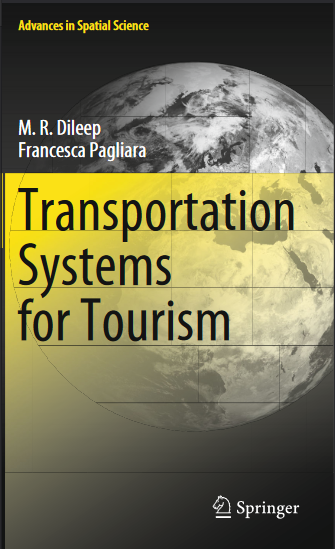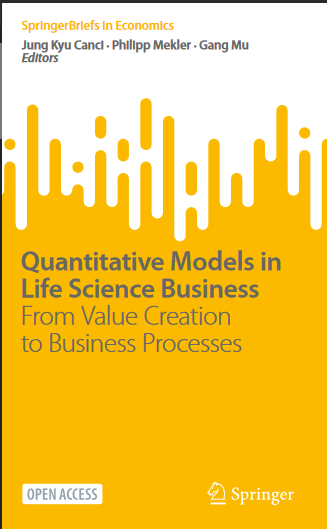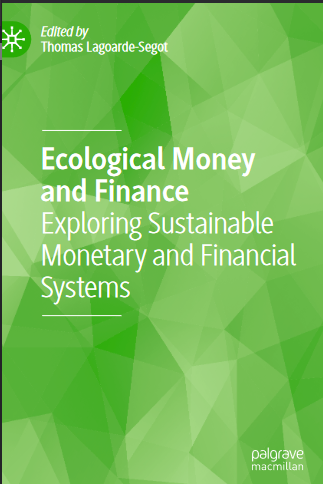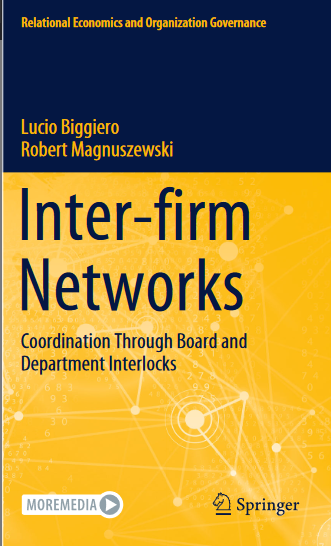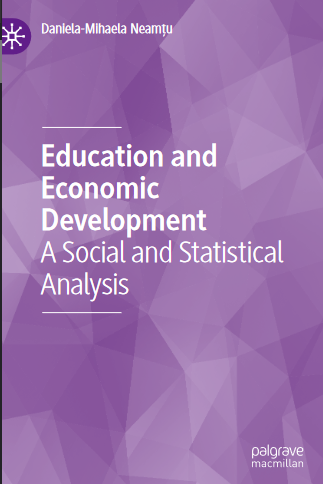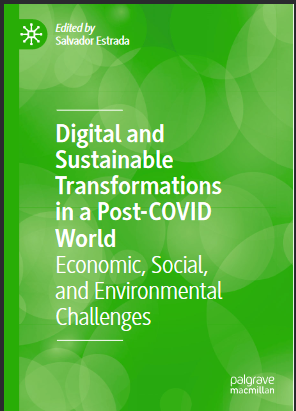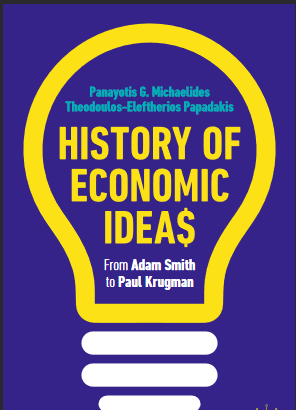موضوعات
آموزش و پرورش
ادبیات و زبان
پزشکی، دندانپزشکی و داروسازی
تاریخ و جغرافیا
داستان و رمان
دیگر
دین و فلسفه
روانشناسی
ریاضیات و آمار
سلامتی، تناسب اندام و رژیم غذایی
شیمی و پلیمر
علوم اجتماعی و حقوق
علوم زیستی و بیوتکنولوژی
فیزیک و نجوم
کامپیوتر و اینترنت
کتابهای کودکان و داستان
کسب و کار و اقتصاد
کشاورزی و دامپزشکی و غذا
معماری
مهندسی و فناوری
هنر و تئاتر
محصولات
The Pearl of the East The Economic Impact of the Colonial Railways in the Age of High Imperialism in Southeast Asia - Original PDF
نویسندگان: خلاصه: During the last decades of the nineteenth century until the 1930s, economic growth in Southeast Asia (we understand Southeast Asia at the end of the nineteenth century: Burma, British colony, Thailand or inde- pendent Siam, Malaysia British colony, Indonesia or Dutch East Indies, Dutch colonies, Indochina, French colonies and the Philippines, Spanish colonies until the end of the century, and from 1898 onwards, American colonies until independence) was a common fact among the economies of the region, despite finding differences in the growth patterns of different countries. Particularly relevant are the studies of Maddison, who analyze Indochina and the Dutch East Indies (Maddison 1990, p. 364). In the case of the Philippines, the most relevant growth model studies are provided by Hooley, with an attempt to explain the growth of the Philip- pines (Hooley 2005, pp. 464–488) and Booth, who emphasizes the analysis of the impact of the provision of new land for the plantation economy in the Philippine archipelago (Booth 2007, pp. 241–266). It should also be noted that these models often work with partially estimated data for dates for which there are no historical references, particularly when data from more remote areas must be covered. In the case of the Philippines, we have worked with data from engineering and execution projects for the Spanish period, and census data for the North American periodTransportation Systems for Tourism - Original PDF
نویسندگان: خلاصه: The term “transportation system” is usually referred to the equipment and logistics of transporting passengers and goods. It covers the trips by all means of transport, from cars and buses to boats, aircraft, and even space travel. The objective of a transportation system is to coordinate the movement of people, goods, and vehicles in order to use routes most efficiently. When implemented, transportation systems seek to reduce transport costs and improve delivery times through effective timetabling and route management. Periodic re-evaluations and the development of alternative routes allow for timely changes to the transportation system to for increasing the efficiency. A standard transportation system will usually feature multiple timetables designed to inform the user of where each vehicle in the fleet is expected to be at any given point in time. These timetables are developed alongside an array of route plans designed to coordinate vehicle movements in a way that prevents bottlenecks in any one location. The main benefit of implementing a transportation system is delivery of goods and users to their destinations in a timely manner. This, in turn, increases the effi- ciency of vehicle use, as the same vehicle can be used for “multi-drop” jobs, such as bus services or home delivery networks, far more effectively when their routes are planned in advance rather than being generated “on the fly”. Transportation systems are developed in a wide variety of sizes. Local transport networks spanning the bus network for a city and its suburbs are common, as are country-wide delivery networks for haulage firms. Airlines use international transportation systems to coordinate their flights. The larger the distance being covered, the more effective the use of vehicles when a transportation system is used.Quantitative Models in Life Science Business - Original PDF
نویسندگان: خلاصه: The pharmaceutical industry is a key, yet complex sector within the global econ- omy. Organizationally, its complexity is outlined by an involved business model, an intricate organizational structure, and a challenging environment. Economically, the pharmaceutical industry has been characterized by high profit margins; this mainly as a result of substantial research and development (R&D) investment and its legal protection by patents. Over time the original situation has evolved further, gener- ating two major types of pharmaceutical firms: originators and generic producers. High R&D investment is a characteristic of the originator pharmaceutical companies which produce patent-protected drugs, as well as biotech specialists which produce biologics. The generic producers, on the other hand, do not incur the initial R&D expenses (or less so) and in general produce drugs lacking patent protection. On top of this now traditional set, new segments have arisen in the pharmaceutical indus- try, comprising services in or around the traditional drug industry, e.g. diagnostic or data-oriented endeavours.Ecological Money and Finance - Original PDF
نویسندگان: خلاصه: v As early as 1890, the economist Alfred Marshall wrote: ‘Economic condi- tions are constantly changing, and each generation looks at its own prob- lems in its own way’. Our generation, in turn, faces particularly pressing problems: financial crises, the uncertain effects of technological change, widening income and wealth inequalities, rising public and private debts, geopolitical tensions, climate change, degradation of natural systems, etc. One particularly worrying fact is that the ‘Great Industrial Acceleration’ has now been identified as the root cause of a major disruption of the Earth system. This disruption is undermining not only the resilience of our global economy but also life on Earth. As shown in Fig. 1, a simple linear regression between global GDP and kilotons of CO2 emissions shows a correlation coefficient of 0.966. A linear regression between global market capitalization and CO2 emissions also shows a correlation coefficient of 0.960. The accumulation of monetary wealth (through GDP) thus mirrors the unaccounted destruction of ecosystem services, and the accumulation of a colossal energy and ecological debt. The rate of species extinction is now 100 times higher than the average observed over the last 10 million years. Nearly 1 million species are threatened with extinction. Compliance with the Paris Agreement—which commit to keeping global warming well below 2° by 2100—is clearly a civilizational issue that calls for a deep reorientation of our socioeconomic modeInter-firm Networks Coordination Through Board and Department Interlocks - Original PDF
نویسندگان: خلاصه: Firms do not interact only through prices, quantity or quality: rather they employ many other ways to coordinate their behavior. However, it is still rather unclear under which circumstances the mix of different ways is built, neither the relative relevance of each of them. What is sure is that one of such ways is through sharing a director between boards of related companies: this is the phenomenon named interlocking directorates or, more recently, board interlock (BINT), known since long, but still deserving a lot of attention. Actually, this is a form of coordination which occurs at a company’s highest level, because boards decide—or at least address to—the strategic behavior. There are indeed many reasons to share a director, reasons that do neither always nor intentionally deal with strategic issues. However, whatever they are, the effects of board interlock always impact, to a more or less extent, the sphere of strategies. Further, and more noteworthy, more or less intentionally and extensively, they imply some form of knowledge creation and sharing, espe- cially under its tacit form. In fact, what should actually be done when one sits in a board and how to perform this is not a task so precisely defined: its concrete execution depends primarily and essentially on the personal characteristics of each involved director and on various organization-specific circumstances. Hence, this is the conceptual perspective applied into this book: Board interlocks are inter-firm coordination forms that channel strategic knowledge, which is a resource particu- larly precious in innovation-based industries, and one becoming progressively more important also in all other industries. Due to these characteristics, the main research streams employed in this work are the four following: board interlocks, knowledge networks, inter-firm networks and Social Network Analysis (hereafter, SNA) as the main methodological approach.Education and Economic Development - Original PDF
نویسندگان: خلاصه: The foundation of present-day society is based on human resources as a key element for growth and based on education for economic and social prosperity. It has become a true fact that current development relies heav- ily on education and culture as a business model, some communities hav- ing their own internalized ways, while other cultures provide for a more open society. Consequently, education in modern society has become a field of study as well as an object of study for teachers, economists, soci- ologists, and many other researchers. The progress of a society, considered from both an economic and a social perspective, is accomplished by acquir- ing knowledge allowing the human potential to be used in the best pos- sible way in various conditions. Education stands for the foundation of a free and open society, the cornerstone of a powerful and sound state. From a professional point of view, education represents the key foundation of human resource develop- ment worldwide. Globally, society itself heads continuously toward a knowledge-based economy, where education and performance are con- stantly judged against performance indexes, as well as a comparison index, among countries. Numbers and narratives lead to the transformation and valorization of strategic resources based on innovation, learning, and changHandbook of Hope Theory, Measures, & Applications - PDF
نویسندگان: خلاصه: This Handbook of Hope simply would not have happened without a small army of graduate students who, over the past decade, have come into my office one by one and suggested yetanother angle from which we could view hope. In that sense, what has come to be called hope theory has been like a gemstone that, when held to the light, sends shimmers of ideas about yet other possible implications or experiments. I have produced previous theories about reactions to personal feedback, uniqueness seeking, excuse making, and reality negotiation, hue none of chose have continued co produce the sufficiently intriguing questions to get me revved up for yet another experiment. Hope theory has been a great energizer at a time in my life when I have needed it. For the past seven years I have had a severe, unrelenting, and undiagnosed chest pain that is with me from my fim waking moments to the time th.at I slip off into sleep. Although I have been taking powerful pain killers, I think that none of those pills matches the positive effects of my getting lost in theory and research and work- ing with my students. At age 55 (by the time this book is published), I still enjoy the theory and bench science to the same degree that I did as a brand new 27-year- old assistant professor here at Kansas. And so, I have much for which to be th:.ink- ful.Digital and Sustainable Transformations in a Post-COVID World Economic, Social, and Environmental Challenges - Original PDF
نویسندگان: خلاصه: The worst of times in 50 years. Wars, pandemics, and climate change. In addition, to civil and drug wars, ethnic violence, and terrorist insurgen- cies, now we are suffering a Geopolitics war. Over a half billion infected people and 6 million passed away. Climate change worsens natural disas- ters such as floods, drought, wildfires, and hurricanes. Pain, life losses, grief and suffering, exodus, and famine. In brief a humanitarian disaster. No doubt, these conditions exercise pressure to accelerate a transfor- mation. Global warming warns of carbon dependence. Change demands large-scale investments in renewable energy, but this solution is not contradiction-free. This technology requires rare earth minerals and other scarce and non-renewable materials found in a few countries. In times of deglobalization, opening trade is demanded to enable such a transfor- mation. We are living for these conditions: severe economic disruptions, higher costs of living, energy, commodities, and food price shocks. How is the world after a persistent COVID-19 pandemic? The COVID-19 pandemic is a decreasing worry since several parts of the world are becoming endemic, but we still suffer its impacts manifested in inflation, energy prices, and supply chain disruption. Nonetheless, the outlook for the economy is perceived as dark since the conflict in Ukraine and the threat of new virus strains and variants as other zoonotic diseases. So, the 2021 economic recovery has a turndown and provokes a cautious sentimenDevelopment Delusions and Contradictions An Anatomy of the Foreign Aid Industry - Original PDF
نویسندگان: خلاصه: xix Around 1700 almost everyone on earth was poor or destitute, and Thomas Hobbes’ phrase about life as “poor, nasty, brutish and short” certainly hit the mark. Perhaps only one-tenth of the world’s population was living what could be considered anywhere near comfortable lives. At least, this is what most economic historians will tell you. Jumping ahead 250 years, one could definitely say two completely dif- ferent worlds had emerged—a prosperous West and a definitely lagging Rest. The reasons for this ascendency of the West were due to processes and factors that, even today, are not well understood, but this huge West– Rest economic divide led to the realization that this gap was one of the great issues of the times, one that needed to be addressed as part of any new world order. Thus, by 1950 it could be said that the Development Era began. Some 70 years later, after untold machinations and lots and lots of money, the West is still very much at it. Western nations and institutions constructed increasingly sophisticated systems to redress this divide, based originally on the idea that transposed expertise and capital was what was needed to help nations build modern economies, to prosper, and eventually to be self-sustaining. Not only would these ‘emerging’ nations become partners in global prosperity; they would become great consumers as well and, through the miracles of free trade, economies of scale and comparative advantage, the West as well as the Rest would benefit. Yet what sounded so clear and noble back at the start of the Development Era, and what has remained, at least ostensibly, the philosophical bedrock of helping poor nations, has had to face a very rocky road, to say the leasHistory of Economic Ideas From Adam Smith to Paul Krugman - Original PDF
نویسندگان: خلاصه: xv Introduction Economic Science is the Social Science that studies the activities of people associ- ated with the creation of goods and services, with the real-world economic and financial transactions, both at the individual and collective levels. Economic Science is based on one or more theories, which are shaped, co-constructed or replaced with each other with the aid of quantitative analysis (mathematics, statistics, economet- rics, experiments, etc.). Economic Theory, in turn, is an abstract description of the functioning of the extremely complex real world, where new scientific knowledge does not emerge from ‘nowhere’ but arises out of existing knowledge, in a dialectical relationship with the ‘existing’ and very often to its negation. Therefore, science develops and evolves as a ‘living organism’, and often one scientific theory is followed by another in continuity, extension or even opposition to the previous one. Therefore, in order to have a body of knowledge for understanding Economics, we must delve into the various individual ‘truths’ of each theory and, therefore, we must look back to the work of earlier thinkers, within a science that is constantly evolving. This journey of the formation of Economic Theory cannot be seen independently of its social context, since it is within this context that Economic Science has devel- oped, in response to the social conditions that prevailed and their evolution. Therefore, an Economic Theory without knowledge of the deeper internal as well as external causal relationships that have shaped the existing theories would lead to a sterile view.آیا کتاب مورد نظر هنوز بر روی سایت قرار نگرفته است؟ جای نگرانی نیست! کافی است بر روی گزینه سفارش کتاب کلیک کرده و درخواست خود را ثبت کنید. در کمتر از چند ساعت کتاب شما را آماده خواهیم کرد.

